Effects of the Visual Character of Transitional Spaces on Human Stress Recovery in a Virtual Reality Environment
Abstract
1. Introduction
2. Methods
2.1. Research Process
2.2. Research Tools
3. Experimental Design
3.1. Research Population
3.2. Research Design
3.3. Outcome Measures
3.4. Experimental Procedure
4. Data Statistics
5. Results and Analysis
5.1. Demographics
5.2. Experimental Randomization
5.3. Stress Recovery Effects
5.4. Interaction of Continuous Measurement Data with Time
6. Discussion
6.1. The Effect of Environmental Geometry on Human Stress Recovery
6.2. Comparison of Psychological and Physiological Data Results
6.3. Potential for Transitional Spaces to Improve Population Stress
7. Limitations and Future Research
8. Conclusions
Author Contributions
Funding
Institutional Review Board Statement
Informed Consent Statement
Data Availability Statement
Conflicts of Interest
References
- Sparks, K.; Faragher, B.; Cooper, C.L. Well-Being and Occupational Health in the 21st Century Workplace. J. Occup. Organ. Psychol. 2001, 74, 489–509. [Google Scholar] [CrossRef]
- Ousey, G.C.; Kubrin, C.E. Exploring the Connection between Immigration and Violent Crime Rates in U.S. Cities, 1980–2000. Soc. Probl. 2009, 56, 447–473. [Google Scholar] [CrossRef]
- Stansfeld, S.; Candy, B. Psychosocial Work Environment and Mental Health—A Meta-Analytic Review. Scand. J. Work Environ. Health 2006, 32, 443–462. [Google Scholar] [CrossRef]
- World Health Organization. Available online: https://www.who.int/home (accessed on 1 May 2022).
- Kessler, R.C.; Green, J.G.; Gruber, M.J.; Sampson, N.A.; Bromet, E.; Cuitan, M.; Furukawa, T.A.; Gureje, O.; Hinkov, H.; Hu, C.Y.; et al. Screening for Serious Mental Illness in the General Population with the K6 Screening Scale: Results from the WHO World Mental Health (WMH) Survey Initiative. Int. J. Methods Psychiatr. Res. 2010, 19, 4–22. [Google Scholar] [CrossRef]
- Substance Abuse and Mental Health Services Administration. Available online: https://www.samhsa.gov/ (accessed on 25 May 2022).
- Kyrou, I.; Tsigos, C. Stress Mechanisms and Metabolic Complications. Horm. Metab. Res. 2007, 39, 430–438. [Google Scholar] [CrossRef]
- Dima-Cozma, C.; Patacchioli, F.R.; Ghiciuc, C.M.; Szalontay, A.; Mitu, F.; Azoicai, D. Current Perspectives in Stress Research and Cardiometabolic Risk. Rev. Cercet. Interv. Soc. 2014, 45, 175. [Google Scholar]
- Lopez, R. The Built Environment and Public Health, 1st ed.; Jossey-Bass: San Francisco, CA, USA, 2012; ISBN 97804706200038. [Google Scholar]
- Baum, A.; Singer, J.E.; Baum, C.S. Stress and the Environment. J. Soc. Issues 1981, 37, 4–35. [Google Scholar] [CrossRef]
- Evans, G.W. Environmental Stress, 1st ed.; Cambridge University Press: New York, NY, USA, 1984; ISBN 0-521-31859-9. [Google Scholar]
- Rose, J. Human Stress and the Environment: Health Aspects, 1st ed.; CRC Press: London, UK, 2022; ISBN 978-0-367-81064-1. [Google Scholar]
- Zimring, C.M. Stress And The Designed Environment. J. Soc. Issues 1981, 37, 145–171. [Google Scholar] [CrossRef]
- Danielsson, M.; Heimerson, I.; Lundberg, U.; Perski, A.; Stefansson, C.-G.; Akerstedt, T. Psychosocial Stress and Health Problems: Health in Sweden: The National Public Health Report 2012. Scand. J. Public Health 2012, 40, 121–134. [Google Scholar] [CrossRef]
- Bratman, G.N.; Anderson, C.B.; Berman, M.G.; Cochran, B.; de Vries, S.; Flanders, J.; Folke, C.; Frumkin, H.; Gross, J.J.; Hartig, T.; et al. Nature and Mental Health: An Ecosystem Service Perspective. Sci. Adv. 2019, 5, 0903. [Google Scholar] [CrossRef]
- Weber, A.M.; Trojan, J. The Restorative Value of the Urban Environment: A Systematic Review of the Existing Literature. Environ. Health Insights 2018, 12, 117863021881280. [Google Scholar] [CrossRef] [PubMed]
- Menardo, E.; Brondino, M.; Hall, R.; Pasini, M. Restorativeness in Natural and Urban Environments: A Meta-Analysis. Psychol. Rep. 2021, 124, 417–437. [Google Scholar] [CrossRef] [PubMed]
- Joye, Y.; van den Berg, A.E. Restorative Environments. In Environmental Psychology; Steg, L., de Groot, J.I.M., Eds.; John Wiley & Sons, Ltd.: Chichester, UK, 2018; pp. 65–75. ISBN 978-1-119-24107-2. [Google Scholar]
- Evans, G.W.; McCoy, J.M. When Buildings Don’T Work: The Role of Architecture in Human Health. J. Environ. Psychol. 1998, 18, 85–94. [Google Scholar] [CrossRef]
- Kondo, M.C.; Jacoby, S.F.; South, E.C. Does Spending Time Outdoors Reduce Stress? A Review of Real-Time Stress Response to Outdoor Environments. Health Place 2018, 51, 136–150. [Google Scholar] [CrossRef] [PubMed]
- Králiková, R.; Piňosová, M. Lighting Quality and Its Effects on Productivity and Human Healts. Int. J. Interdiscip. Theory Pract. 2016, 10, 8–12. [Google Scholar]
- Choi, Y.; Kim, M.; Chun, C. Measurement of Occupants’ Stress Based on Electroencephalograms (EEG) in Twelve Combined Environments. Build. Environ. 2015, 88, 65–72. [Google Scholar] [CrossRef]
- Akbari, J.; Dehghan, H.; Azmoon, H.; Forouharmajd, F. Relationship between Lighting and Noise Levels and Productivity of the Occupants in Automotive Assembly Industry. J. Environ. Public Health 2013, 2013, 527078. [Google Scholar] [CrossRef]
- Valentine, C.W. An Introduction to the Experimental Psychology of Beauty, 1st ed.; Routledge: London, UK, 1962. [Google Scholar] [CrossRef]
- Hogarth, W. The Analysis of Beauty: Written with a View of Fixing the Fluctuating Ideas of Taste; Georg Olms Verlag: Hildesheim, Germany, 1753. [Google Scholar]
- Vartanian, O.; Navarrete, G.; Chatterjee, A.; Fich, L.B.; Leder, H.; Modroño, C.; Nadal, M.; Rostrup, N.; Skov, M. Impact of Contour on Aesthetic Judgments and Approach-Avoidance Decisions in Architecture. Proc. Natl. Acad. Sci. USA 2013, 110, 10446–10453. [Google Scholar] [CrossRef]
- Carreiro, M.; Andrade, M.A.P.; Dias, M.S. Cognition and Evaluation of Architecture Environments Based on Geometric Contour References and Aesthetic Judgements. In Proceedings of the 22nd International Conference of the Association for Computer-Aided Architectural Design Research in Asia, Hongkong, China, 5–8 April 2017. [Google Scholar]
- Dazkir, S.S.; Read, M.A. Furniture Forms and Their Influence on Our Emotional Responses toward Interior Environments. Environ. Behav. 2012, 44, 722–732. [Google Scholar] [CrossRef]
- Suppakittpaisarn, P.; Larsen, L.; Sullivan, W.C. Preferences for Green Infrastructure and Green Stormwater Infrastructure in Urban Landscapes: Differences between Designers and Laypeople. Urban For. Urban Green. 2019, 43, 126378. [Google Scholar] [CrossRef]
- Ghomeshi, M.; Jusan, M.M. Investigating Different Aesthetic Preferences Between Architects and Non-Architects in Residential Façade Designs. Indoor Built Environ. 2013, 22, 952–964. [Google Scholar] [CrossRef]
- Lee, J.H.; Gu, N.; Ostwald, M.J. Creativity and Parametric Design? Comparing Designer’s Cognitive Approaches with Assessed Levels of Creativity. Int. J. Des. Creat. 2015, 3, 78–94. [Google Scholar] [CrossRef]
- Shemesh, A.; Talmon, R.; Karp, O.; Amir, I.; Bar, M.; Grobman, Y.J. Affective Response to Architecture—Investigating Human Reaction to Spaces with Different Geometry. Archit. Sci. 2017, 60, 116–125. [Google Scholar] [CrossRef]
- Fry, G.; Sarlöv-Herlin, I. The Ecological and Amenity Functions of Woodland Edges in the Agricultural Landscape; a Basis for Design and Management. Landsc. Urban Plan 1997, 37, 45–55. [Google Scholar] [CrossRef]
- Kennedy, C.J. The Geometry of Form: A Preference Study. Ph.D. Thesis, University of British Columbia, Kelowna, BC, Canada, May 2003. [Google Scholar]
- Lee, J.H.; Ostwald, M.J. Fractal Dimension Calculation and Visual Attention Simulation: Assessing the Visual Character of an Architectural Façade. Buildings 2021, 11, 163. [Google Scholar] [CrossRef]
- Ruta, N.; Mastandrea, S.; Penacchio, O.; Lamaddalena, S.; Bove, G. A Comparison between Preference Judgments of Curvature and Sharpness in Architectural Façades. Archit. Sci. Rev. 2019, 62, 171–181. [Google Scholar] [CrossRef]
- Hami, A.; Abdi, B. Students’ Landscaping Preferences for Open Spaces for Their Campus Environment. Indoor Built Environ. 2021, 30, 87–98. [Google Scholar] [CrossRef]
- Kenwick, R.A.; Shammin, M.R.; Sullivan, W.C. Preferences for Riparian Buffers. Landsc. Urban Plan 2009, 91, 88–96. [Google Scholar] [CrossRef]
- Winnicott, D.W. Transitional Objects and Transitional Phenomena. Int. J. Psychoanal. 1953, 34, 89–97. [Google Scholar] [PubMed]
- Winnicott, D.W. Playing and Reality, 1st ed.; Routledge: London, UK, 1971; ISBN 0-415-34546-4. [Google Scholar]
- Kray, C.; Fritze, H.; Fechner, T.; Schwering, A.; Li, R.; Anacta, V.J. Transitional Spaces: Between Indoor and Outdoor Spaces. In Proceedings of the 11th International Conference on Spatial Information Theory, Scarborough, UK, 2–6 September 2013. [Google Scholar]
- Alban, J.; Tigges, F. Fundamental Concepts of Architecture, 1st ed.; Birkhauser: Basel, Switzerland, 2014; ISBN 3-0346-1261-3. [Google Scholar]
- Maliki, N.Z.; Abdullah, A.; Bahauddin, A. Recalling the Transitional Space: City Home and Kampung Home. Procedia Soc. Behav. Sci. 2015, 170, 605–612. [Google Scholar] [CrossRef]
- Lin, H.; Xiao, Y.; Musso, F.; Lu, Y. Green Façade Effects on Thermal Environment in Transitional Space: Field Measurement Studies and Computational Fluid Dynamics Simulations. Sustainability 2019, 11, 5691. [Google Scholar] [CrossRef]
- Hou, G. An Investigation of Thermal Comfort and the Use of Indoor Transitional Space. Ph.D. Dissertation, Cardiff University, Cardiff, UK, 2016. [Google Scholar]
- Chun, C.; Kwok, A.; Tamura, A. Thermal Comfort in Transitional Spaces—Basic Concepts: Literature Review and Trial Measurement. Build. Environ. 2004, 39, 1187–1192. [Google Scholar] [CrossRef]
- Kirschbaum, C.; Pirke, K.-M.; Hellhammer, D.H. The ‘Trier Social Stress Test’—A Tool for Investigating Psychobiological Stress Responses in a Laboratory Setting. Neuropsychobiology 1993, 28, 76–81. [Google Scholar] [CrossRef] [PubMed]
- Annerstedt, M.; Jönsson, P.; Wallergård, M.; Johansson, G.; Karlson, B.; Grahn, P.; Hansen, Å.M.; Währborg, P. Inducing Physiological Stress Recovery with Sounds of Nature in a Virtual Reality Forest—Results from a Pilot Study. Physiol. Behav. 2013, 118, 240–250. [Google Scholar] [CrossRef]
- Valtchanov, D. Physiological and Affective Responses to Immersion in Virtual Reality: Effects of Nature and Urban Settings. Ph.D. Thesis, University of Waterloo, Waterloo, ON, Canada, 16 August 2010. [Google Scholar]
- Yin, J.; Zhu, S.; MacNaughton, P.; Allen, J.G.; Spengler, J.D. Physiological and Cognitive Performance of Exposure to Biophilic Indoor Environment. Build. Environ. 2018, 132, 255–262. [Google Scholar] [CrossRef]
- Bhagavathula, R.; Williams, B.; Owens, J.; Gibbons, R. The Reality of Virtual Reality: A Comparison of Pedestrian Behavior in Real and Virtual Environments. Proc. Hum. Factors Ergon. Soc. Annu. Meet. 2018, 62, 2056–2060. [Google Scholar] [CrossRef]
- Ulrich, R.; Simons, R.; Miles, M. Effects of Environmental Simulations and Television on Blood Donor Stress. J. Archit. Plan. Res. 2003, 20, 38–47. [Google Scholar]
- Jovanov, E.; O’Donnell Lords, A.; Raskovic, D.; Cox, P.G.; Adhami, R.; Andrasik, F. Stress Monitoring Using a Distributed Wireless Intelligent Sensor System. IEEE Eng. Med. Biol. Mag. 2003, 22, 49–55. [Google Scholar] [CrossRef] [PubMed]
- Collet, C.; Vernet-Maury, E.; Delhomme, G.; Dittmar, A. Autonomic Nervous System Response Patterns Specificity to Basic Emotions. J. Auton. Nerv. Syst. 1997, 62, 45–57. [Google Scholar] [CrossRef]
- Marteau, T.M.; Bekker, H. The development of a six-item short-form of the state scale of the Spielberger State—Trait Anxiety Inventory (STAI). Br. J. Clin. Psychol. 1992, 31, 301–306. [Google Scholar] [CrossRef]
- Spielberger, C.D.; Gorsuch, R.L.; Lushene, R.E. Manual for the State-Trait Anxiety Inventory; Consulting Psychologists Press: Palo Alto, CA, USA, 1970. [Google Scholar]
- Oxford Learner’s Dictionaries. Available online: https://www.oxfordlearnersdictionaries.com/us/ (accessed on 28 September 2022).
- Brown, D.K.; Barton, J.L.; Gladwell, V.F. Viewing Nature Scenes Positively Affects Recovery of Autonomic Function Following Acute-Mental Stress. Environ. Sci. Technol. 2013, 47, 5562–5569. [Google Scholar] [CrossRef] [PubMed]
- Jo, B.; Jules, P. What Is the Best Dose of Nature and Green Exercise for Improving Mental Health? A Multi-Study Analysis. Environ. Sci. Technol. 2010, 44, 3947–3955. [Google Scholar] [CrossRef]
- Kim, J.; de Dear, R.; Cândido, C.; Zhang, H.; Arens, E. Gender Differences in Office Occupant Perception of Indoor Environmental Quality (IEQ). Build. Environ. 2013, 70, 245–256. [Google Scholar] [CrossRef]
- Cohen, J. Statistical Power Analysis for the Behavioral Sciences, 2nd ed.; Routledge: New York, NY, USA, 1988. [Google Scholar]
- Banaei, M.; Hatami, J.; Yazdanfar, A.; Gramann, K. Walking through Architectural Spaces: The Impact of Interior Forms on Human Brain Dynamics. Front. Hum. Neurosci. 2017, 11, 477. [Google Scholar] [CrossRef] [PubMed]
- Salzmann, H.; Moehring, M.; Froehlich, B. Virtual vs. Real-World Pointing in Two-User Scenarios. In Proceedings of the 2009 IEEE Virtual Reality Conference, Lafayette, LA, USA, 14–18 March 2009. [Google Scholar]
- Kimura, K.; Reichert, J.F.; Olson, A.; Pouya, O.R.; Wang, X.; Moussavi, Z.; Kelly, D.M. Orientation in Virtual Reality Does Not Fully Measure Up to the Real-World. Sci. Rep. 2017, 7, 18109. [Google Scholar] [CrossRef] [PubMed]
- Canlon, B.; Theorell, T.; Hasson, D. Associations between Stress and Hearing Problems in Humans. Hear. Res. 2013, 295, 9–15. [Google Scholar] [CrossRef]
- Bowman, D.A.; McMahan, R.P. Virtual Reality: How Much Immersion Is Enough? Computer 2007, 40, 36–43. [Google Scholar] [CrossRef]
- Pastel, S.; Bürger, D.; Chen, C.H.; Petri, K.; Witte, K. Comparison of Spatial Orientation Skill between Real and Virtual Environment. Virtual Real. 2022, 26, 91–104. [Google Scholar] [CrossRef]
- Lloyd, J.; Persaud, N.V.; Powell, T.E. Equivalence of Real-World and Virtual-Reality Route Learning: A Pilot Study. Cyberpsychol. Behav. 2009, 12, 423–427. [Google Scholar] [CrossRef]
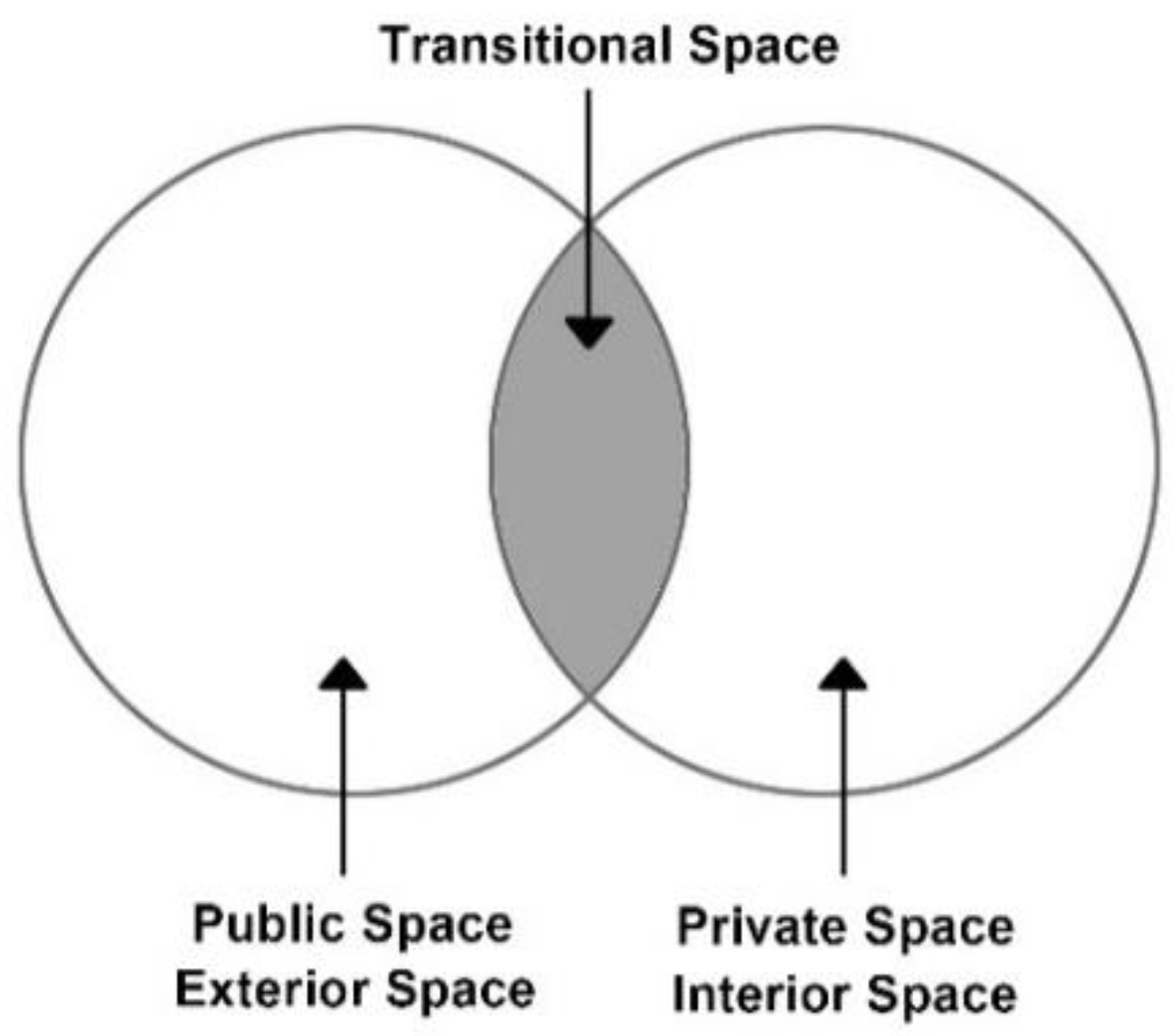

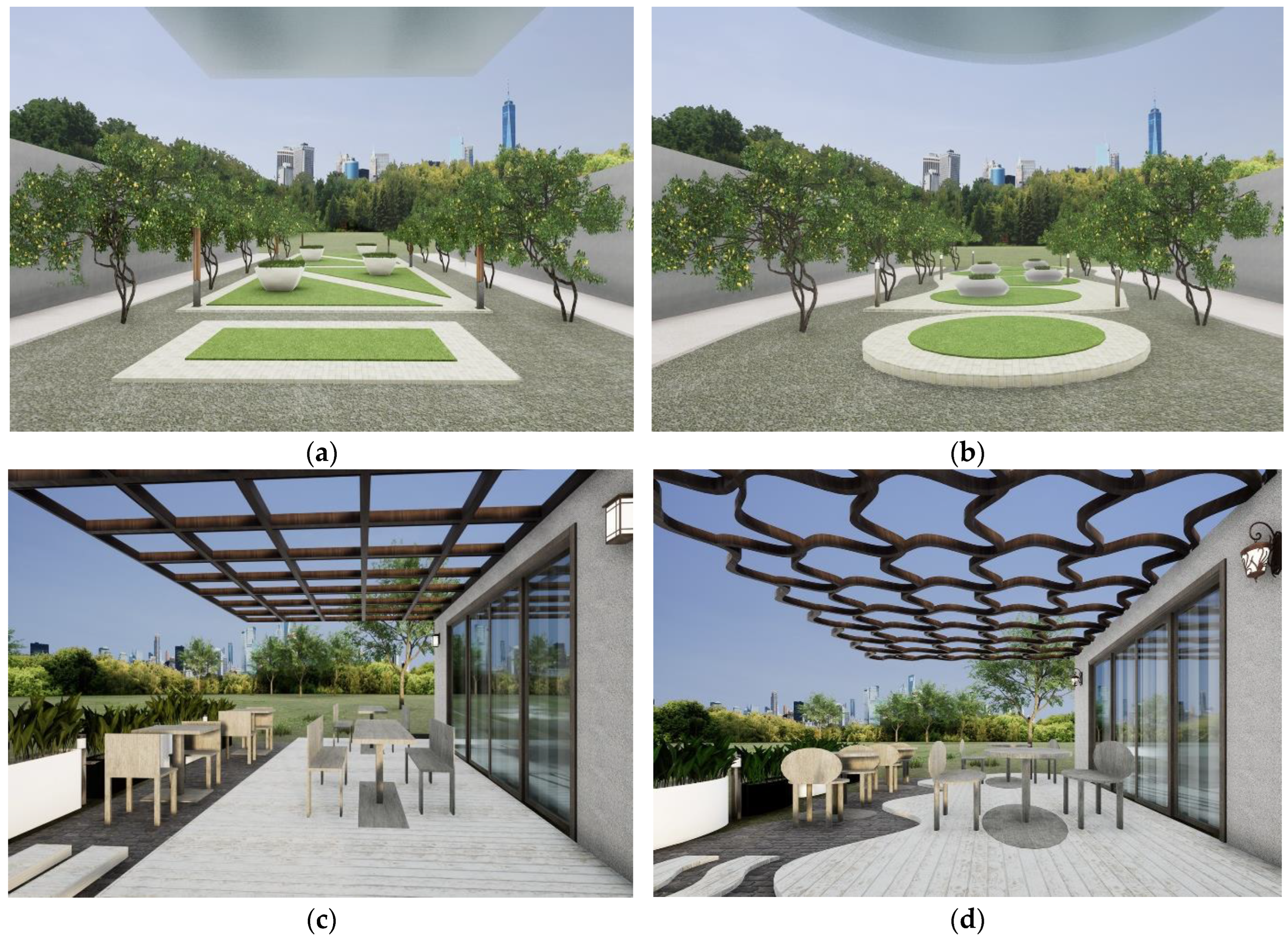
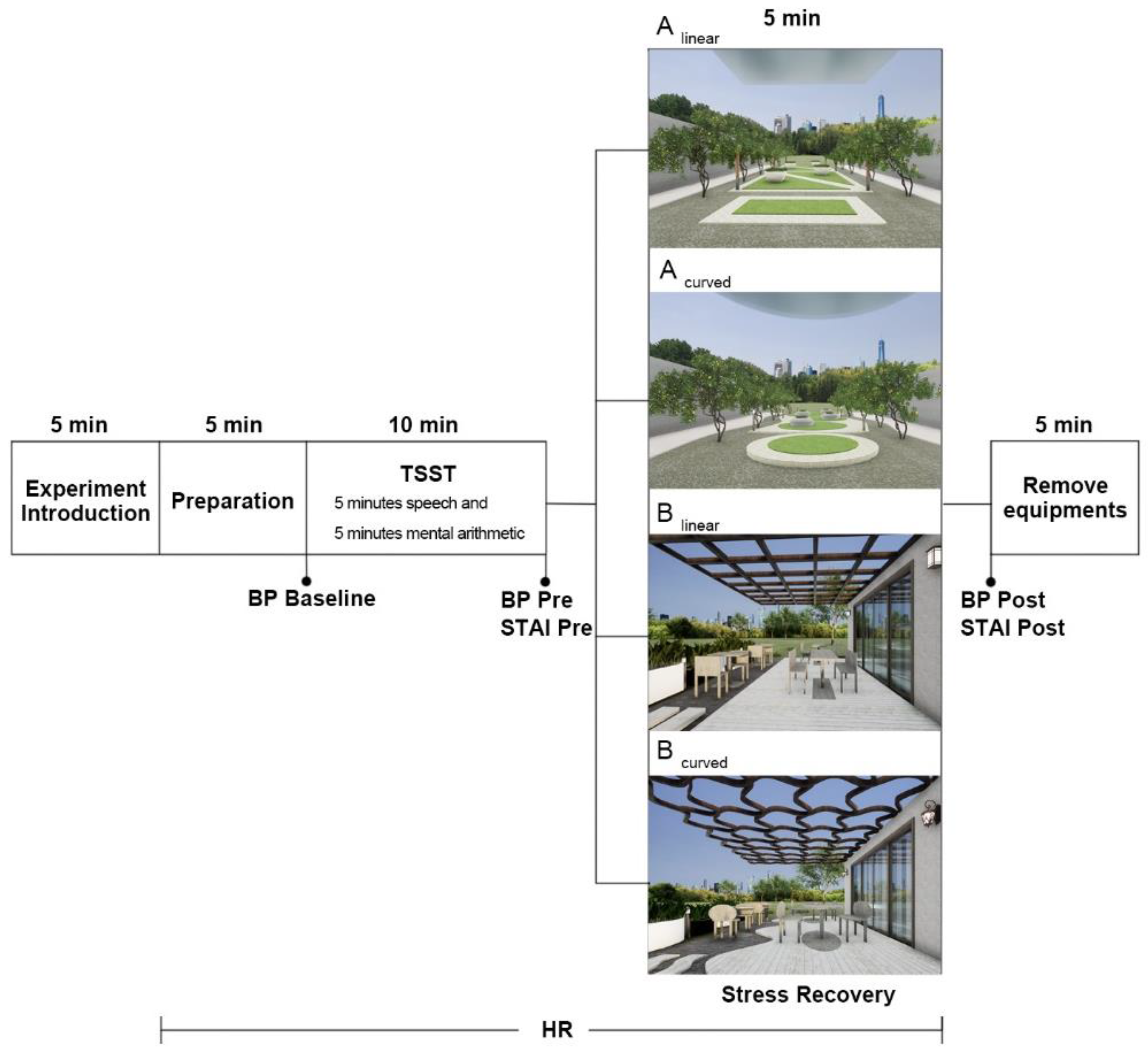

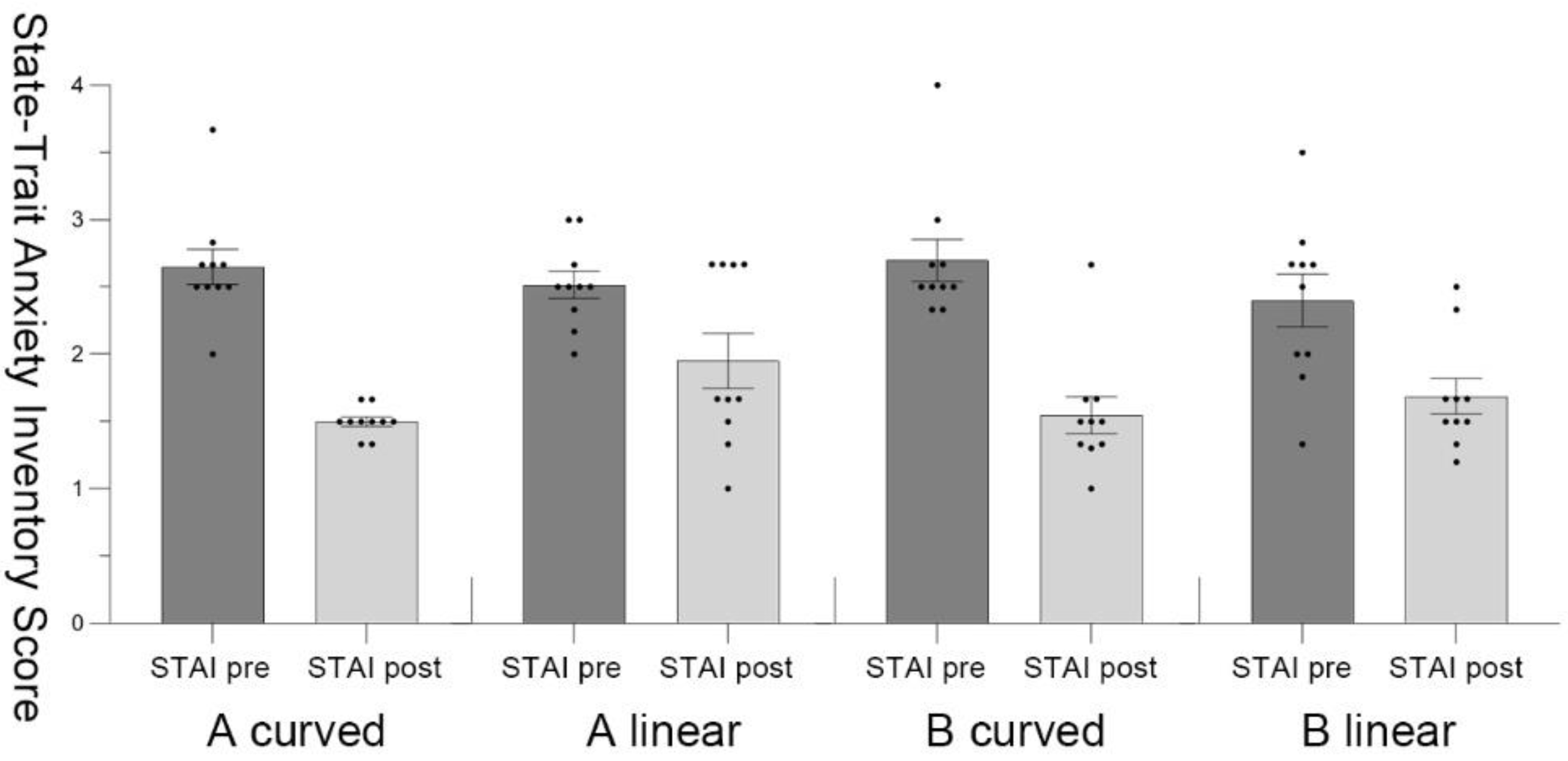
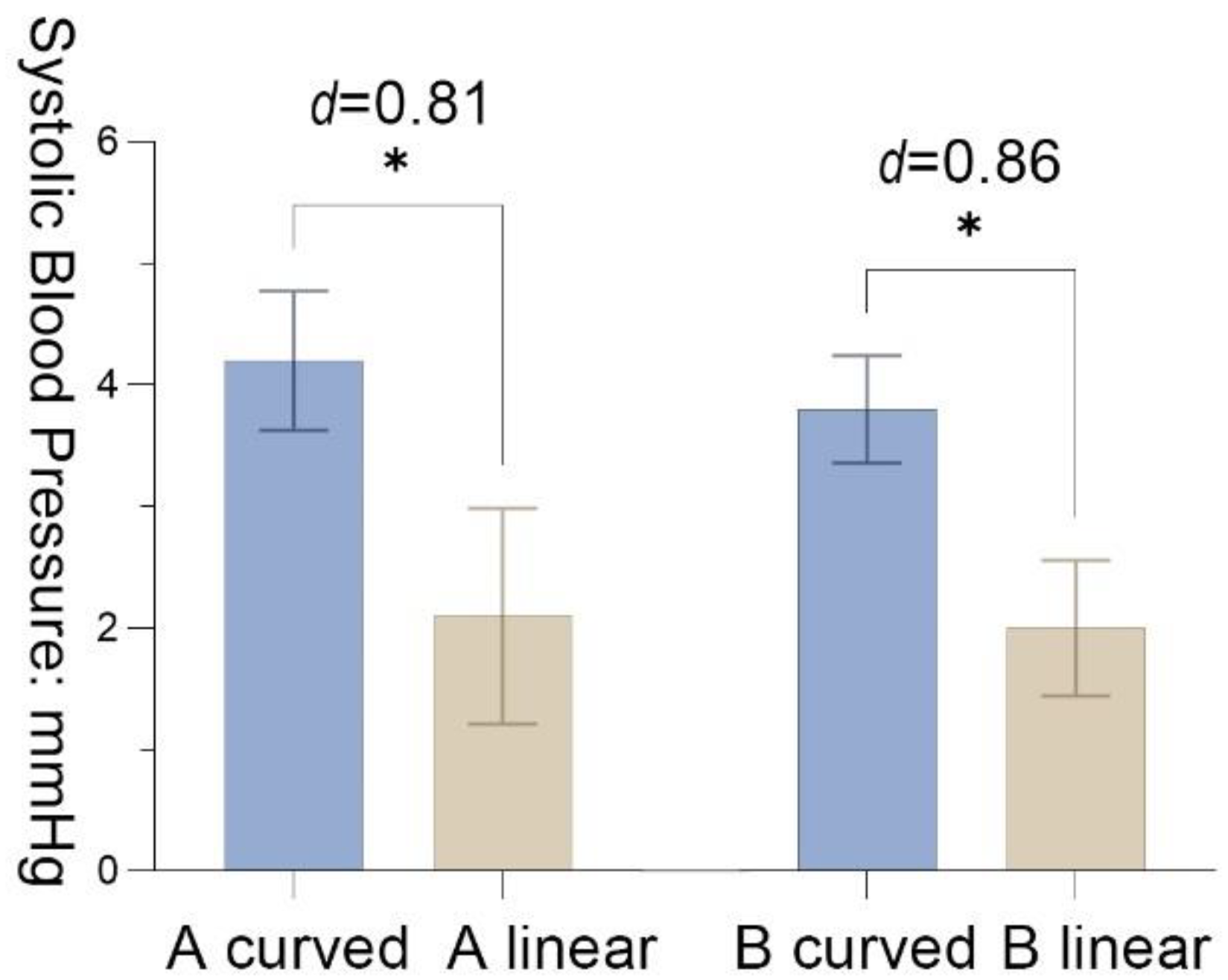
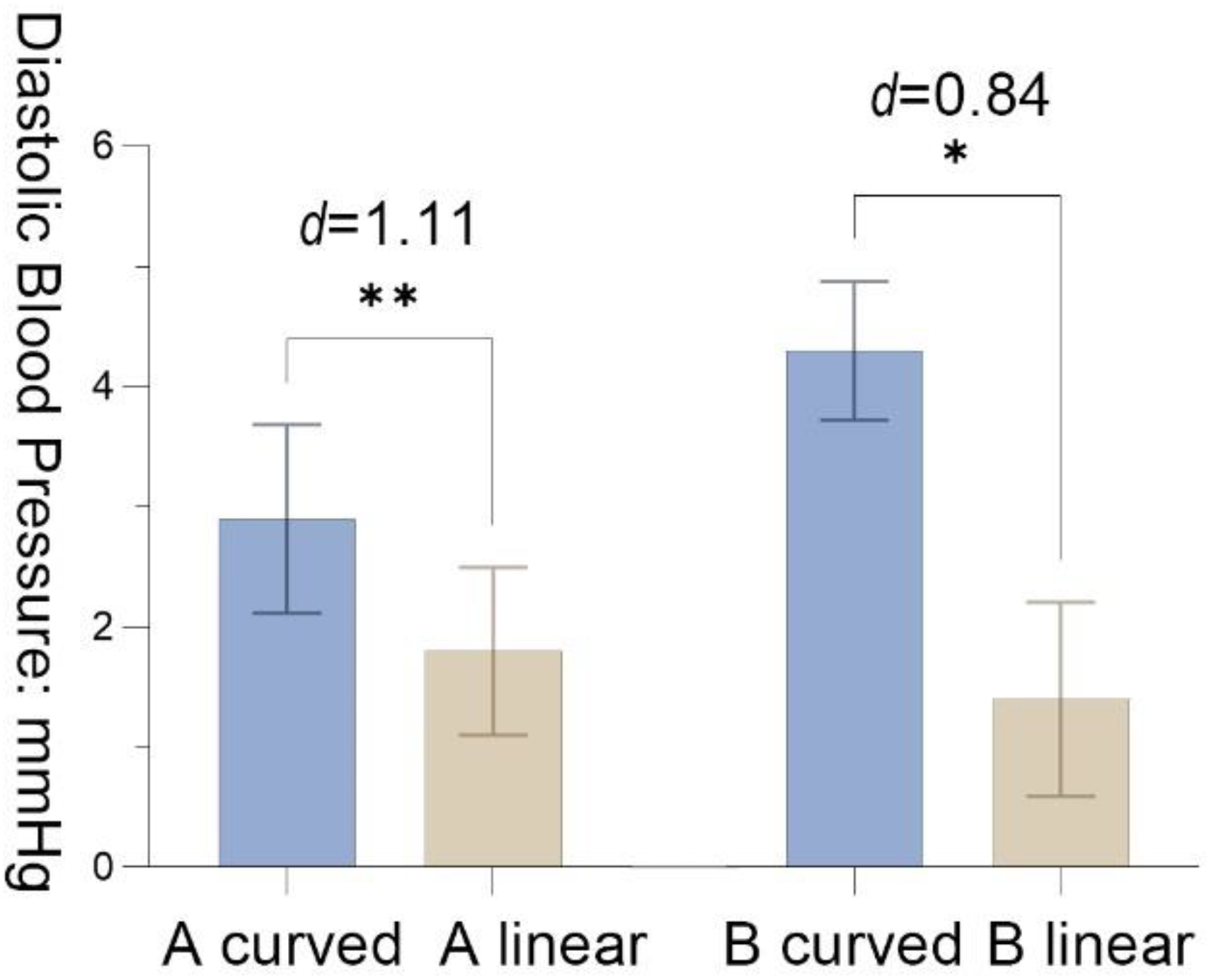
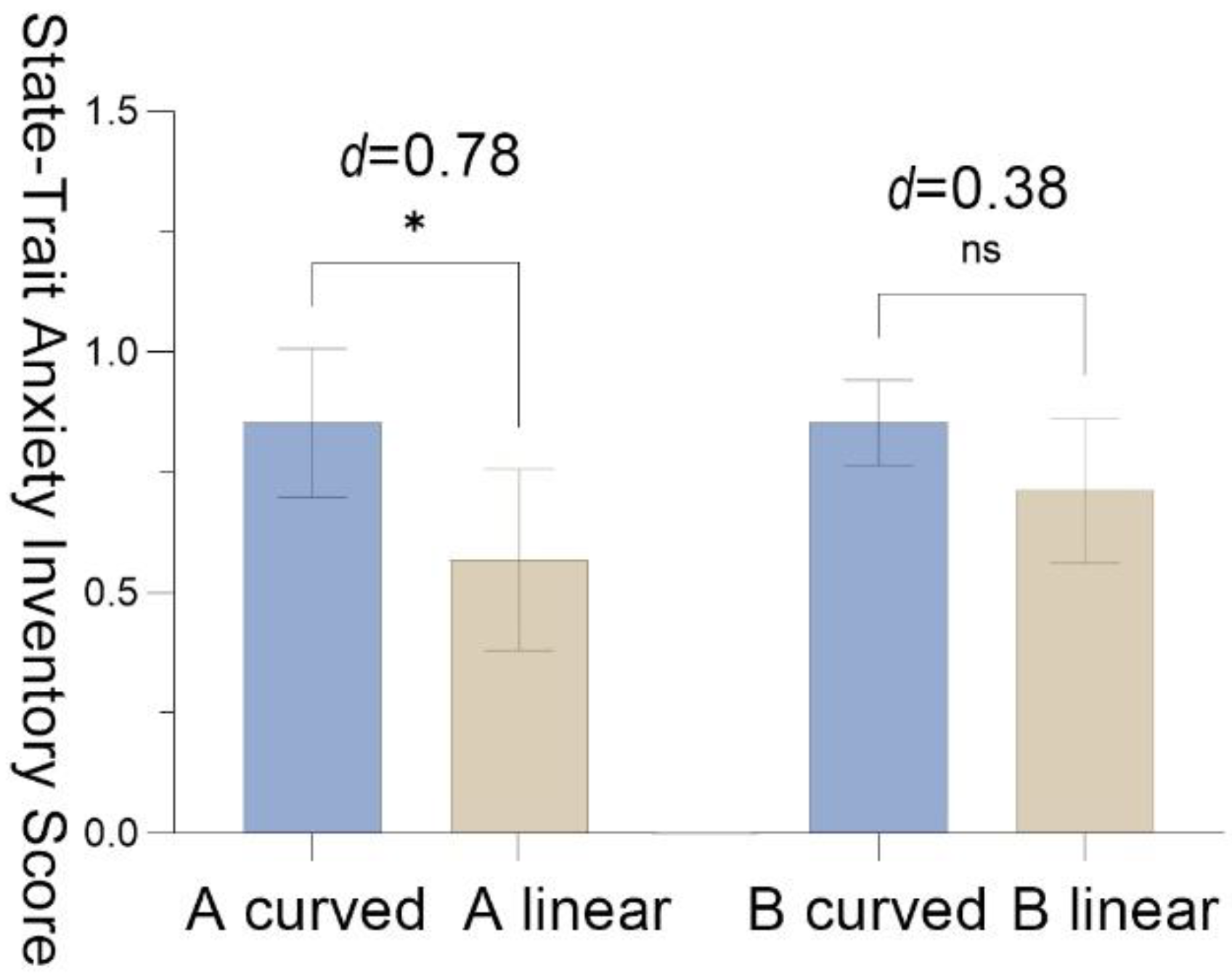
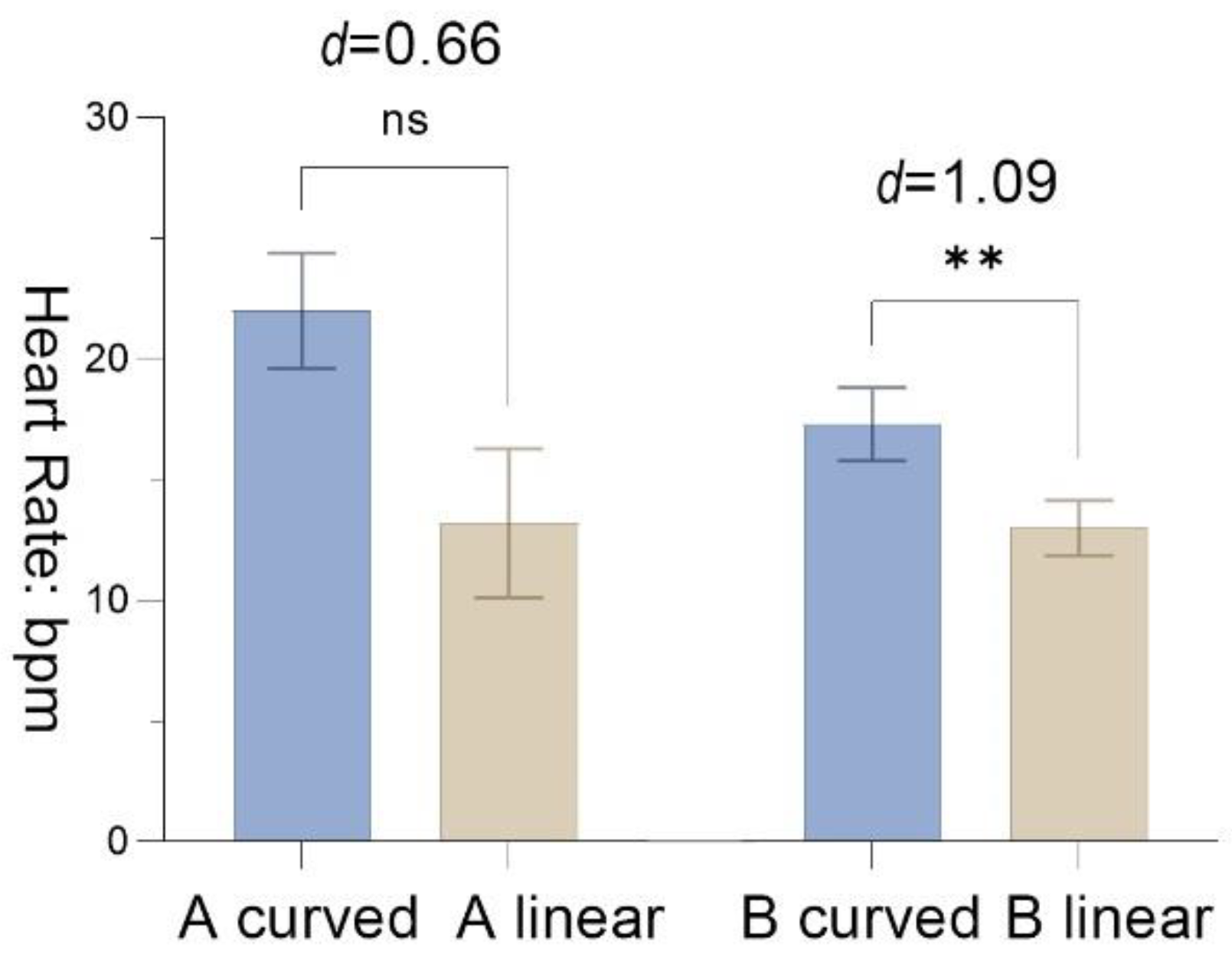
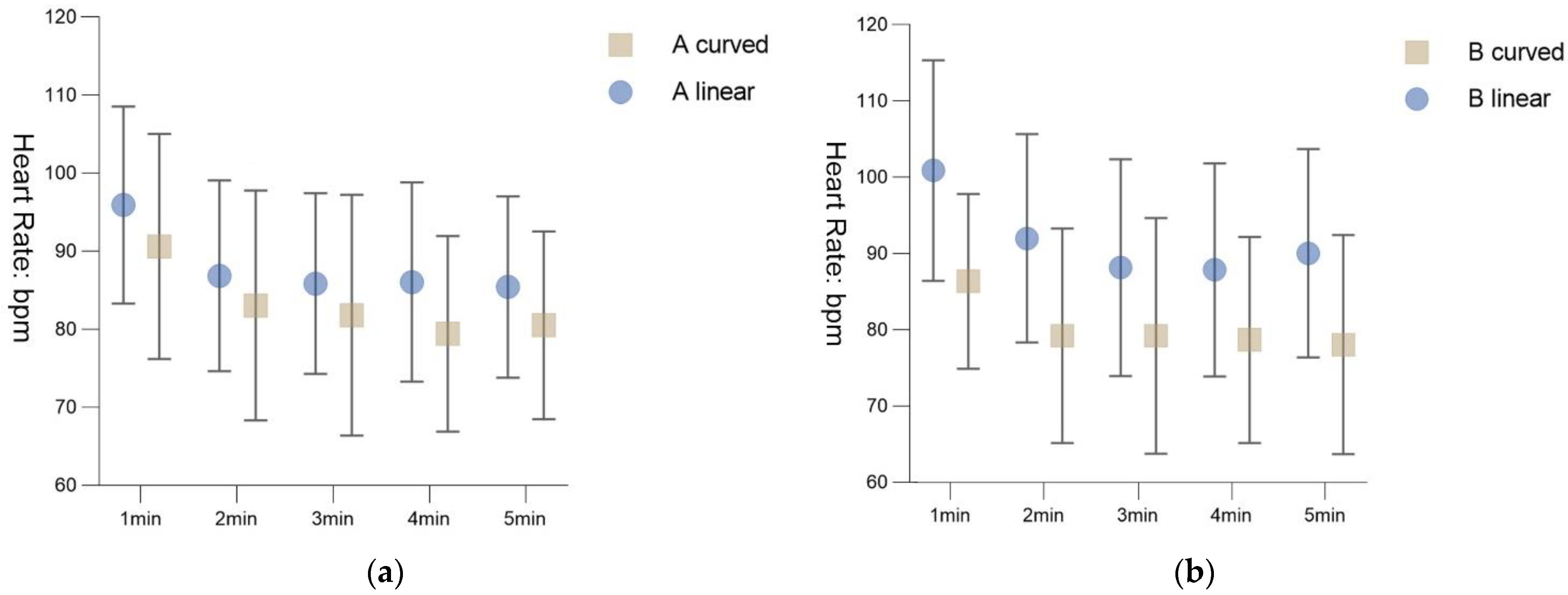
| Title 1 | Overall | A Linear | A Curved | B Linear | B Curved |
|---|---|---|---|---|---|
| Mean ± SD or n (%) | |||||
| Number of Participant | 40 | 10 | 10 | 10 | 10 |
| Age | 25 ± 4 | 25 ± 4 | 24 ± 4 | 24 ± 4 | 25 ± 3 |
| Gender | -- | -- | -- | -- | -- |
| Female | 20 (50) | 5 (50) | 5 (50) | 5 (50) | 5 (50) |
| Male | 20 (50) | 5 (50) | 5 (50) | 5 (50) | 5 (50) |
| Measures | Method | F | df | p Value |
|---|---|---|---|---|
| Pre-TSST | ||||
| Heart Rate (bmp) | ANOVA | 0.86 | 3 | 0.47 |
| Systolic Blood Pressure (mmHg) | ANOVA | 0.63 | 3 | 0.60 |
| Diastolic Blood Pressure(mmHg) | ANOVA | 0.86 | 3 | 0.47 |
| Post-TSST | ||||
| Heart Rate (bmp) | ANOVA | 0.62 | 3 | 0.61 |
| Systolic Blood Pressure (mmHg) | ANOVA | 0.04 | 3 | 0.99 |
| Diastolic Blood Pressure(mmHg) | ANOVA | 0.61 | 3 | 0.61 |
| State-Anxiety Inventory | ANOVA | 0.81 | 3 | 0.49 |
| IEQ | ||||
| CO2 (ppm) | ANOVA | 0.55 | 3 | 0.66 |
| PM2.5 (µg/m3) | ANOVA | 0.48 | 3 | 0.70 |
| Temperature (°C) | ANOVA | 1.57 | 3 | 0.25 |
| Humidity (%) | ANOVA | 0.77 | 3 | 0.53 |
| Measures | Method | T | df | p Value |
|---|---|---|---|---|
| Heart Rate (bmp) | Paired t test | −15.59 | 39 | <0.001 |
| Systolic Blood Pressure (mmHg) | Paired t test | −3.54 | 39 | 0.001 |
| Diastolic Blood Pressure (mmHg) | Paired t test | −3.14 | 39 | 0.003 |
Publisher’s Note: MDPI stays neutral with regard to jurisdictional claims in published maps and institutional affiliations. |
© 2022 by the authors. Licensee MDPI, Basel, Switzerland. This article is an open access article distributed under the terms and conditions of the Creative Commons Attribution (CC BY) license (https://creativecommons.org/licenses/by/4.0/).
Share and Cite
Li, Z.; Huang, X.; White, M. Effects of the Visual Character of Transitional Spaces on Human Stress Recovery in a Virtual Reality Environment. Int. J. Environ. Res. Public Health 2022, 19, 13143. https://doi.org/10.3390/ijerph192013143
Li Z, Huang X, White M. Effects of the Visual Character of Transitional Spaces on Human Stress Recovery in a Virtual Reality Environment. International Journal of Environmental Research and Public Health. 2022; 19(20):13143. https://doi.org/10.3390/ijerph192013143
Chicago/Turabian StyleLi, Zhixian, Xiaoran Huang, and Marcus White. 2022. "Effects of the Visual Character of Transitional Spaces on Human Stress Recovery in a Virtual Reality Environment" International Journal of Environmental Research and Public Health 19, no. 20: 13143. https://doi.org/10.3390/ijerph192013143
APA StyleLi, Z., Huang, X., & White, M. (2022). Effects of the Visual Character of Transitional Spaces on Human Stress Recovery in a Virtual Reality Environment. International Journal of Environmental Research and Public Health, 19(20), 13143. https://doi.org/10.3390/ijerph192013143






